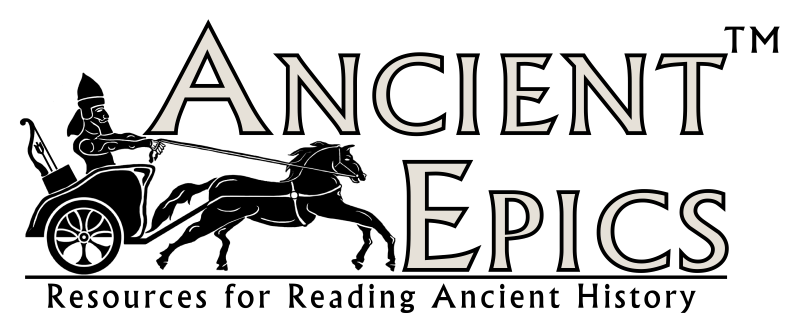
Hebrew and Jewish Culture
“Phoenicia and Palestine will for ever live in the memory of mankind; since America, as well as Europe, has received letters from the one, and religion from the other.”
— Edward Gibbon, The History of the Decline and Fall of the Roman Empire
By “Hebrew” I mean various cultures that existed before 586 BCE; by “Jewish” I mean those that developed following the Babylonian captivity in that year. Most of our knowledge of the Hebrews comes from the Hebrew Bible, later Jewish sources, and a few contemporary witnesses. Therefore, the primary source of information on the Hebrews is the Hebrew Bible. On the other hand, much more has survived on Jewish culture. Besides the many writings of their own, we have Persian, Greek, and Roman testimony, among others, to the movements and activities of the Jewish people.
The theological vision of both Hebrews and Jews, though relatively small groups of people, formed an essential foundation for the development of both Christianity and Islam as world religions, making the Hebrew and Jewish contributions to Western civilization quite significant.
Besides Near Eastern culture in general, as well as Greek culture, the Hebrew and early Jewish cultures are surely among those that hold my interest the most.
Hebrew Culture
PRIMARY SOURCES
Alter, Robert, trans. The Hebrew Bible: A Translation with Commentary. 3 vols. New York: W. W. Norton & Company, 2019.
Elliger, Karl, Wilhelm Rudolph, and Adrian Schenker eds. Biblia Hebraica Stuttgartensia: A Reader’s Edition. Fifth Revised Edition. Peabody, MA: Hendrickson Publishers, 2014.
Fox, Everett, trans. The Five Books of Moses. New York: Schocken Books, 1995.
Hertz, J. H., ed. The Pentateuch and Haftorahs. 2nd ed. London: Soncino Press, 1960.
Scherman, Nosson, ed. The Stone Edition Tanach. The Artscroll Series. Brooklyn, NY: Mesorah Publications, 1996.
Thomas, D. Winton, ed. Documents from Old Testament Times. New York: Harper & Row, 1961.
Tsedaka, Benyamim, ed. and trans., and Sharon Sullivan, ed. The Israelite Samaritan Version of the Torah: First English Translation Compared with the Masoretic Version. Grand Rapids, MI: Wm. B. Eerdmans, 2013.
SECONDARY SOURCES
Cline, Eric H. Biblical Archaeology: A Very Short Introduction. New York: Oxford University Press, 2009.
—-. From Eden to Exile: Unraveling Mysteries of the Bible. Washington, D. C.: National Geographic Society, 2008.
Cross, Frank Moore. Canaanite Myth and Hebrew Epic. Cambridge, MA: Harvard University Press, 1997.
Heschel, Abraham J. The Prophets. New York: Harper Perennial Modern Classics, 2001.
Janzen, Mark D., ed. Scott Stripling, James K. Hoffmeier, Peter Feinman, Gary A. Rendsburg, and Ronald Hendel. Five Views on The Exodus. Grand Rapids, MI: Zondervan Academic, 2021.
Kitchen, K. A. On the Reliability of the Old Testament. Grand Rapids, MI: Wm. B. Eerdmans, 2003.
Redford, Donald B. Egypt, Canaan, and Israel in Ancient Times. Princeton, NJ: Princeton University Press, 1992.
Jewish Culture
PRIMARY SOURCES
Brenton, Sir Lancelot C.L. The Septuagint with Apocrypha: Greek and English. Originally Published, London: Samuel Bagster & Sons, 1851. Peabody, MA: Hendrickson Publishers, 2011.
Charlesworth, James H., ed. The Old Testament Pseudepigrapha. 2 vols. Peabody, MA: Hendrickson Publishers, 2016.
Guggenheimer, Heinrich W., trans. Seder Olam: The Rabbinic View of Biblical Chronology. Lanham, MD: Rowman & Littlefield Publishers, 2005.
Hammond, Martin, trans. Josephus: The Jewish War. New York: Oxford University Press, 2017.
The Book of Jasher. Translated into English from the Hebrew, 1840. Salt Lake City: J. H. Parry & Company, 1887. Reprint, Muskogee, OK: Artisan Publishers, 1988.
Vermes, Geza, trans. The Complete Dead Sea Scrolls in English. Revised Edition. New York: Penguin Books, 2004.
Whiston, William, trans. The Works of Josephus: New Updated Edition. Peabody, MA: Hendrickson Publishers, 1987.
Yong, C. D., trans. The Works of Philo: New Updated Edition. Peabody, MA: Hendrickson Publishers, 1993.
SECONDARY SOURCES
Bokser, Ben Zion. Wisdom of the Talmud. 1951. New York: The Citadel Press, 1962.
Collins, John J. The Apocalyptic Imagination: An Introduction to Jewish Apocalyptic Literature. 3rd ed. Grand Rapids, MI: Wm. B. Eerdmans Publishing, 2016.
Goodman, Martin. Rome and Jerusalem: The Clash of Ancient Civilizations. New York: Vintage Books, 2008.
Hoffman, Edward, trans. The Wisdom of Maimonides: The Life and Writings of the Jewish Sage. Boston, MA: Trumpeter Books, 2008.
Rabinowitz, Abraham Hirsch. TaRYaG: A Study of the Tradition that the Written Torah Contains 613 Mitzvot. Northvale, NJ: Jason Aronson, 1996.
Schurer, Emil. A History of the Jewish People in the Time of Jesus Christ. First Division, 2 vols. Second Division, 3 vols. Edinburgh: T. & T. Clark, 1890. Reprint, Peabody, MA: Hendrickson Publishers, 1998.
AUDIO/VISUAL RECORDINGS
Beginnings of Judaism, DVD. Taught by Isaiah M. Gafni. The Great Courses, 2008.
Jesus and His Jewish Influences, DVD. Taught by Jodi Magness. The Great Courses, 2015.
Origins of Great Ancient Civilizations, DVD. Taught by Kenneth W. Harl. The Great Courses, 2005.
The Book of Genesis, DVD. Taught by Gary A. Rendsburg. The Great Courses, 2006.
The Dead Sea Scrolls, DVD. Taught by Gary A. Rendsburg. The Great Courses, 2010.
The History and Archaeology of the Bible, DVD. Taught by Jean-Pierre Isbouts. The Great Courses, 2021.
The Holy Land Revealed, DVD. Taught by Jodi Magness. The Great Courses, 2010.
The World of Biblical Israel, DVD. Taught by Cynthia R. Chapman. The Great Courses, 2013.
Understanding the Old Testament, DVD. Taught by Robert D. Miller II. The Great Courses, 2019.
